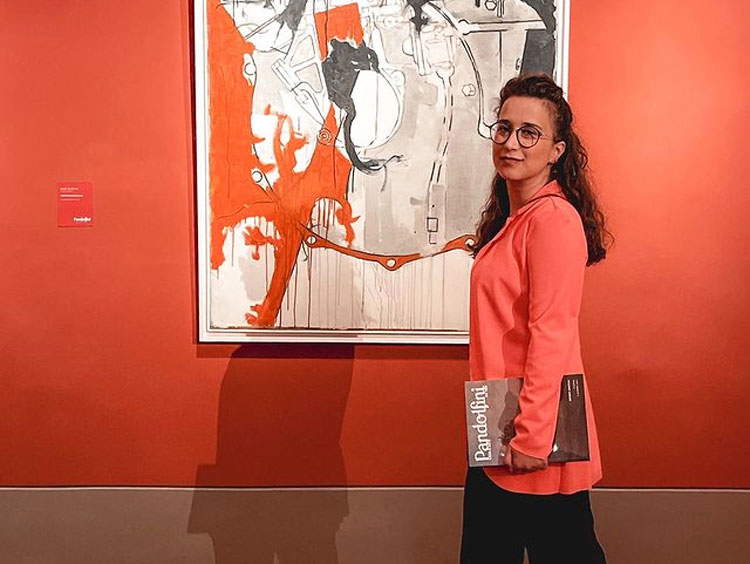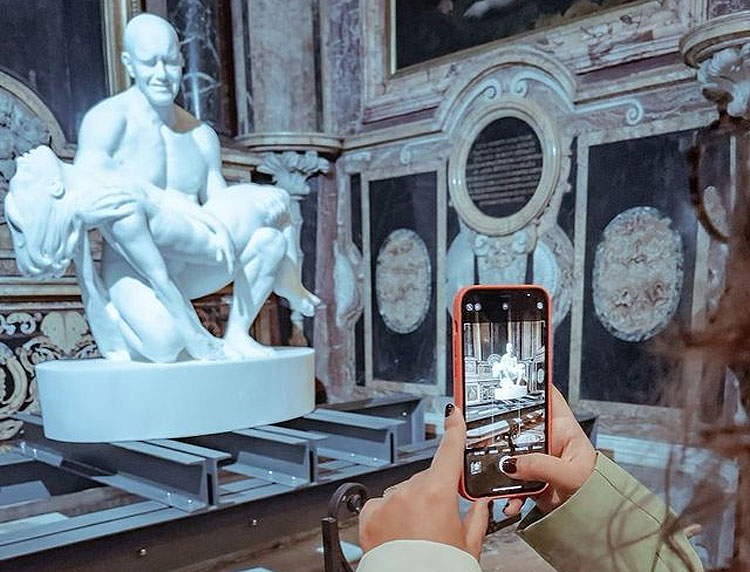The problem of unemployment in the cultural sector is a real issue that affects (and afflicts) several recent graduates (and not) of academic courses in archaeology, art history, cultural heritage management, and cultural heritage economics. According to a recent study(Cultural heritage and intellectual unemployment, edited by Alessandro F. Leon), the percentage of graduates and employed in the sector is around 37.8 percent. This means that well over half of cultural heritage graduates do not find a place in the working world pertaining to the field for which they did their studies.
Faced with delayed competitions by the Ministry of Culture and a job offer reduced almost to the bone by museums, both public and private, young people who continue to study cultural heritage are looking for new work tools that will allow them to “create a job” for themselves when it is not offered by those in charge. Many of these recent graduates are turning to technology and social networks. In particular, these in recent times have enabled the creation of new specialist figures in the cultural sector, such as theArt Advisor and theArt Strategist. These professional figures, experts primarily in digital marketing, while not part of the official staff of a museum or cultural enterprise, work alongside it and create the cultural and marketing strategies to make art venues “more attractive” to the national and international visiting public.
This is the case of Eleonora Rebiscini, Roman by birth, who, after a master’s degree in art history, decided to attend the Business School of “Il Sole 24 Ore” and obtained a Master’s degree in Economics and Management of Art and Cultural Heritage. Thus, she approaches social media marketing since her university days, dedicating herself to her family’s e-commerce business. Eleonora, born in 1992, immediately understood the potential of digital marketing applied to art and began, precisely through her Instagram profile, to disseminate art. Today her Instagram account has as many as eleven thousand followers, not a small number considering the fact that her target audience is predominantly Italian and passionate not about fashion, but about art. Speaking with Eleonora, we learn about a new professional figure, that of the “Art Strategist,” a multi-purpose professional who combines experience in the field of art with digital marketing, as she herself clarified for Finestre Sull’Arte.


FDV. Eleonora, could you kindly explain to those who are disinclined to the world of social media and technology, what it means to work as an art strategist for museums, auction houses, and businesses related to art and culture? I think this is extremely important of you, considering the difficulties that many (including myself) have in framing this new professional figure that we have been hearing a lot about recently...
ER. The art strategist is a new professional figure, born to combine technical skills in digital marketing with those acquired during my university studies in art history. At Palazzo Strozzi in Florence, for example, I have been working for the past three months on a project related to the American Art exhibition with the specific aim of expanding the audience of visitors, and also to increase the degree to which the museum’s name is known by its users. The project, which lasted about three months, involved work on finding influencers who reflected the themes of the exhibition, such as the stigma of AIDS in the United States, or the issue of racism.
I find it very interesting that you worked with an auction house. What is the role played by an art strategist for an auction house?
For the Pandolfini auction house, which I still work with, it was mostly strategic consulting with the staff working in the marketing department to enhance and increase Pandolfini’s brand identity online. We worked closely for three months (May to July 2021) and I helped shape their social media line of communication.
I imagine that the pandemic has definitely disrupted your work in a positive sense, given the increased use of social networks by users and that it has affected somewhat all sectors of the economy. Has this been the case for your work as well?
With the pandemic, my skills have become in high demand because digital language, needless to say, has been a key medium for the revitalization of the Art world. Creating and curating a digital communication strategy turned out to be a perfect expedient to promote and enhance our national artistic heritage and bring people back to museums. I felt and still feel useful because my work, in its own small way, is contributing to the recovery. When people ask me what I do, I answer that I actually deal with the present and the future of art: with Artsquare.io, an Italian startup based in London, a tokenization platform that for as little as one euro allows everyone to become a co-owner of works by icons like Andy Warhol and Keith Haring and young contemporaries like Jago, we are contributing to the democratization of the art market by breaking down barriers to access. In a nutshell, it is the same mechanism that affects the stock market. For Artsquare.io, I head the startup’s marketing department, curating its public image and informing potential clients on how to use its services. This is a very ambitious project, which reflects my principles in every way.
One last remark and a final question. Since 2020, you have also been a lecturer in Digital Marketing for Art and Culture for the Treccani Academy’s master’s program Economics and Management of Art and Cultural Heritage, a postgraduate training school. What is your relationship with young (and not ) graduates in the field who are now entering the world of work? What advice do you feel like giving them? In your opinion, is it still possible to find a job today in the world of cultural heritage?
As a teacher of the Treccani Academy master’s program, I have the opportunity to be in contact with young recent graduates who are trying with all their might to realize themselves within the sector and to work in the field for which they graduated, a situation that, as you know, is very difficult in Italy today. The thing that makes me most proud is the confrontation with these young people who write me every day to ask for advice. I am always honest and straightforward: without patience, study and resourcefulness you will go nowhere. Finding work in the art sector in Italy is still possible; it takes open-mindedness, which is essential to combine seemingly unrelated sectors. The important thing is not to get stuck on one perspective: there is not only the career of museum curator or that of university lecturer and researcher. You have to look around, look for new paths and continue to train, as I did by approaching a seemingly distant field such as digital marketing, which, however, is allowing me to work in the art world.
Warning: the translation into English of the original Italian article was created using automatic tools. We undertake to review all articles, but we do not guarantee the total absence of inaccuracies in the translation due to the program. You can find the original by clicking on the ITA button. If you find any mistake,please contact us.